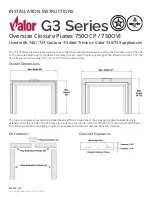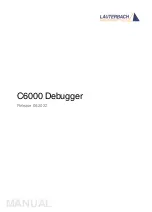
4
Calibrate
4.1
Zero point calibration
Even in the absence of free chlorine, the sensor generates a small signal
called the zero current. Failing to correct for the zero current can introduce a
bias, particularly if the chlorine concentration is small (<0.4 ppm). Zero the
sensor when it is first placed in service and every time the fill solution is
changed.
To zero the sensor:
Procedure
1. Pour a cup of deionized or bottled water.
2. Add a few pinches of table salt to the water to increase the
conductivity.
3. Place the sensor in the water.
4. Wait until the sensor current has reached a stable low value (at least
two hours).
5. Follow the transmitter prompts for zeroing the sensor.
Note
Refer to the manual for the transmitter you are using (Rosemount
56, 1056, 5081, or 1066).
The zero current should be between -10 and +10 nA. For more information,
refer to the transmitter manual.
4.2
Full scale calibration
Because stable dilute chlorine standards are not available, the sensor must
be calibrated against the results of a laboratory test run on a grab sample of
the process liquid.
Be sure taking the sample does not alter flow to the sensor and test the
sample immediately after taking it.
Procedure
1. Place the sensor in the flow cell.
2. Start the sample and reagent flow.
3. Adjust the sample flow to within the range given in the table in
.
4. Adjust the concentration so that it is near the upper end of the
operating range.
5. Wait for the readings to stabilize.
September 2019
Quick Start Guide
Quick Start Guide
17








































